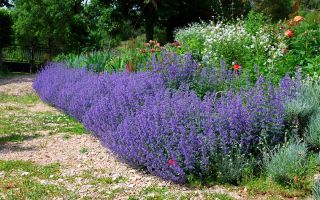Content
The benefits and harms of catnip for humans are determined on an individual basis. But most often the plant is tolerated positively. It is often used in alternative medicine. And in ancient times, catnip was used instead of tobacco.
What does a catnip look like and where does it grow?
Catnip is a fragrant plant of the Yasnotkov family. It got its unusual name because of its attractiveness for cats and cats. More than 250 plant species are distinguished in nature. Catnip is ubiquitous in Canada, Asia and European countries. On the territory of Russia, it grows, mainly in Siberia. The cattleman loves the riversides, flowering meadows and forests. A suitable landscape allows the grass to grow up to 120 cm in height.
Outwardly, the catnip resembles mint. A distinctive feature is a whitish coating in the form of small fluffy hairs. The length of catnip leaves ranges from 2 to 8 cm. They have characteristic serrated edges. The inflorescences can reach 8 cm in diameter. The inflorescences are spike-shaped. They have purple dots on them. Photos of the catnip can be seen below.
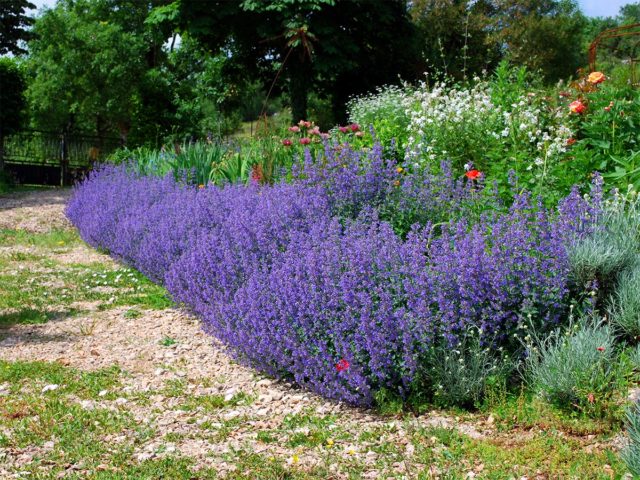
How is it different from lemon balm
A common man in the street will not immediately distinguish lemon balm from catnip. External similarity is due to the origin of plants from the same family. If the shape of the lemon balm leaf is egg-shaped, then in the catnip, the base of the leaf part resembles a heart.
In both representatives of the Lamiaceae family, flowers are collected in whorls, which are transformed into brushes. In catnip, they are spike-shaped, and in lemon balm, they are arranged in tiers. But the main difference lies in the color of the leaves. In lemon balm, they are rich green, and in catnip - covered with "gray hair". A slight difference between plants is also noticed in the effect on the human body. Melissa helps to lower the heart rate, and catnip increases the heart rate.
Chemical composition
The therapeutic effect of catnip on the body is achieved due to the content of nutrients. They have powerful anti-inflammatory and soothing properties. The presence of volatile compounds in the composition is of particular importance. They provide the plant with a rich aroma. The chemical composition of catnip includes the following components:
- vitamin C;
- tannins;
- vitamins A, B and PP;
- slime;
- glycosides;
- saponins;
- minerals (calcium, iron, phosphorus, sodium, potassium, magnesium);
- essential oils.
The beneficial effect on the functioning of the digestive system is due to the content of tannins. They relieve inflammation and stimulate motility. Ascorbic acid in the herb activates the immune system. Glycosides help with diseases of the cardiovascular system. Thanks to its saponin content, cat grass helps to relieve coughs and reduce the level of bad cholesterol in the blood.
Healing properties of catnip
Catnip has a variety of health benefits. Studies have shown that it speeds up the heart rate by up to 40%. This allows it to be used to treat cardiovascular diseases. Due to its natural origin, catnip can be used even for preventive purposes. It has a positive effect on the functioning of the digestive system and supports immunity.
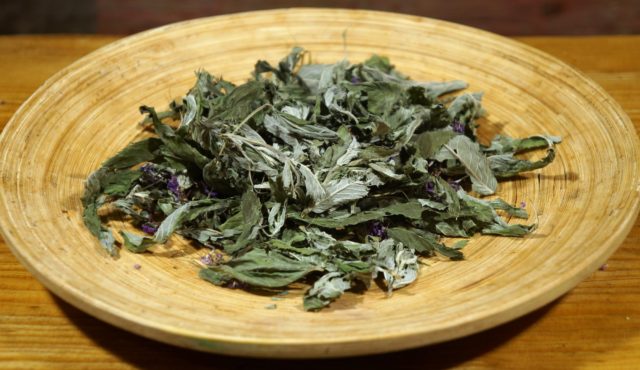
The medicinal properties of catnip herb include:
- choleretic action;
- antispasmodic effect;
- getting rid of parasites;
- anti-inflammatory action;
- normalization of the menstrual cycle;
- calming effect;
- hemostatic effect;
- elimination of seizures;
- normalization of bowel function;
- strengthening of immunity;
- cough treatment.
Since ancient times, a lot of magical properties have been attributed to catnip. Today it is often used to stabilize the emotional state. The subtle scent of catnip helps to quickly fall asleep and eliminate unreasonable anxiety. In addition, the plant has a tonic effect on the body. For women, it can be used to increase libido and stabilize the menstrual cycle.
Catnip has a healing effect not only on humans, but also on cats. It attracts them with its scent, producing a calming effect. In some cases, veterinarians recommend giving the herb to pets for medicinal purposes.
The use of catnip feline in folk medicine
The beneficial properties of lemon catnip make it a truly versatile remedy. He easily copes with various diseases and pathological processes. The most widespread in folk medicine was herbal decoction. Alcohol tincture is no less popular. For each disease, a specific dosage regimen and a recipe for the preparation of a therapeutic agent are provided. Most often, catnip is combined with other herbs.
The use of Basilio catnip is widespread in cooking. In eastern countries, it is used as a seasoning, both dried and fresh. Due to its unique taste, it perfectly complements the marinade for fish and meat. Catnip is often added to alcoholic beverages, sauces and pastries.
For skin diseases
For skin diseases, catnip is used as part of a herbal collection. An infusion is prepared from it, which is then taken in 1/3 tbsp. 3 times a day. The ingredients are taken in the same proportions.
Components:
- catnip;
- myrrh resin;
- St. John's wort;
- blueberry fruits;
- blue verbena;
- elecampane;
- 400 ml of water.
Cooking process:
- The components are mixed together. 3 tsp the resulting mixture is poured into a container and poured with hot water.
- The drink is infused for half an hour.
- Before use, the infusion is filtered through cheesecloth.
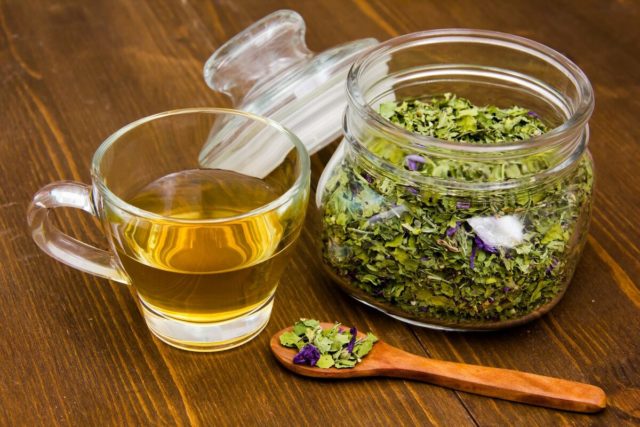
For insomnia
A decoction for the treatment of insomnia is taken in 100 ml 3 times a day. The total treatment period is 2-3 weeks. All components are taken in the same ratio.
Ingredients:
- valerian root;
- chamomile flowers;
- catnip;
- hop;
- passionflower;
- Baikal skullcap;
- 400 ml of water.
Cooking process:
- The herbs are mixed together in a separate container.
- 3 tsp the resulting mixture is poured into a container and filled with water.
- The liquid is boiled for 5 minutes. After removing from heat, it is insisted under the lid for 1 hour.
- The finished drink must be filtered before use.

For muscle pain
Components:
- 1 tsp catnip;
- 1 tsp skullcap;
- 1 tsp valerian;
- 300 ml of water.
Recipe:
- Pour the herbal mixture with hot water.
- Within 20 minutes, the drink is infused.
- The infusion is taken instead of tea as needed.
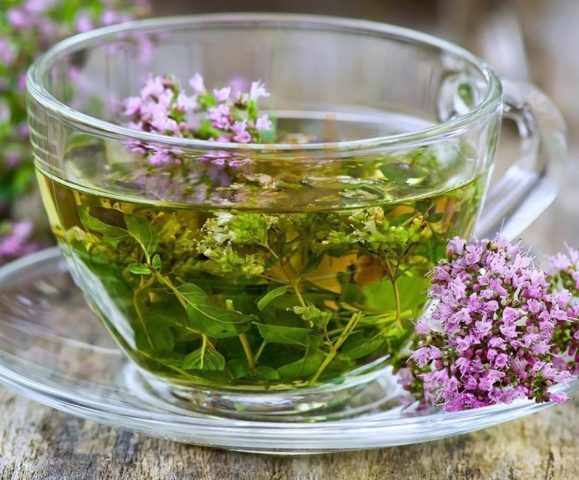
To increase libido
One of the health benefits of catnip is to increase sex drive. For these purposes, a medicinal tincture is used. It is taken in 1 tbsp. l. per day.
Components:
- 1 tbsp. l. honey;
- juice of 1 lemon;
- 1 tbsp. l. catnip;
- 3 tbsp. l. spring water;
- ½ tsp hare grass;
- 200 ml of red wine.
Recipe:
- All components are placed in a saucepan.
- After boiling, the container is removed from the heat and covered with a lid. It takes 3 hours to infuse the medicine.
- The finished drink is taken chilled.

For sore throat
Ingredients:
- 2 tsp catnip;
- 1 tbsp. hot water.
Cooking algorithm:
- The herb is poured over with hot water and then covered with a lid.
- The remedy is insisted for 1 hour.
- The resulting solution is filtered and used for rinsing.
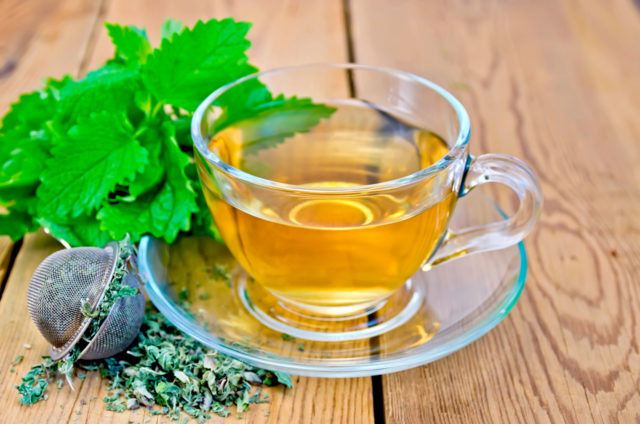
From neuroses
Ingredients:
- 280 ml of water;
- 30 g of dried catnip.
Recipe:
- The herb is ground with a blender to a powder and then transferred to a brewing vessel.
- Pour boiling water over the catnip and leave to infuse. It is advisable to cover the container with a warm cloth.
- The duration of the infusion is 30 minutes.
- After straining, the infusion is taken in 50 ml 4-5 times a day.
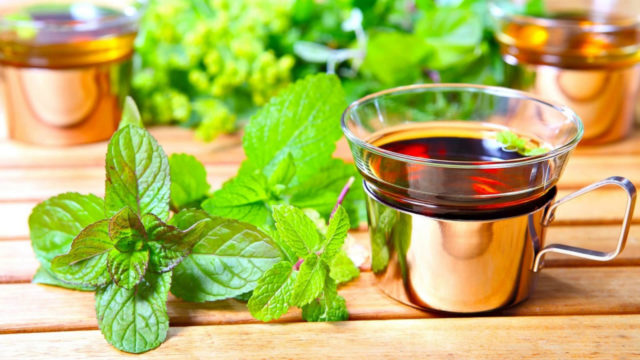
For colds
Components:
- 1 liter of water;
- 50 g catnip.
Cooking algorithm:
- The herb is poured with liquid and placed in a water bath.
- After half an hour, the container is removed from the heat, covered with a lid and kept for 2 hours.
- The filtered drink is taken instead of regular tea.
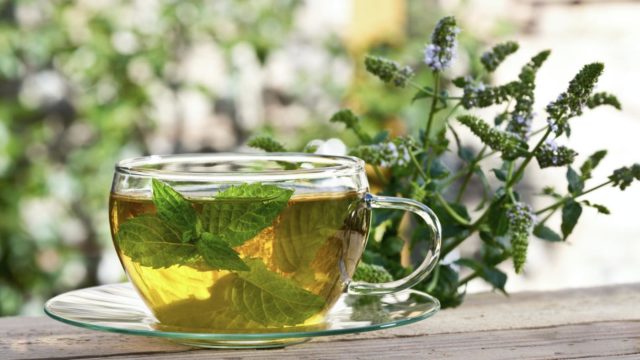
With hypertension
Ingredients:
- 1 tbsp. l. cat grass;
- 300 ml boiling water.
Cooking process:
- The dry mixture is poured with hot water.
- The drink is infused under the lid for 3 hours.
- The finished infusion is filtered through a sieve and taken in 1 tbsp. l. 30 minutes before meals.
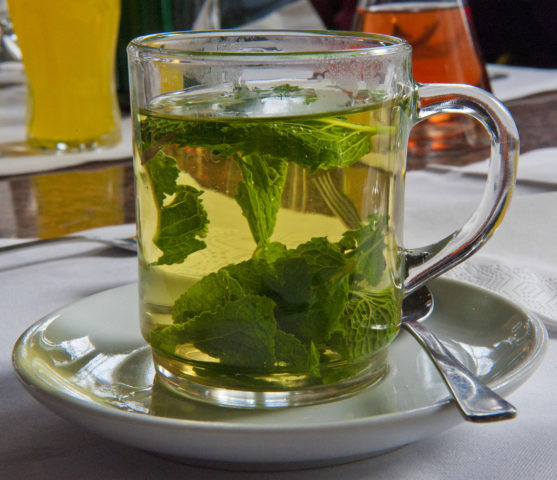
The use of catnip in cosmetology
In cosmetology, it is customary to use a decoction of catnip instead of tonic. It is used to cleanse the skin before going to bed. This method of care evens out the complexion and relieves acne breakouts. Compresses with decoction are great for bags under the eyes.
With profuse hair loss, the remedy is used to rinse the head after washing. This helps to strengthen the hair follicles and get rid of dandruff. With regular procedures, the hair becomes soft and crumbly.
Contraindications
Supporters of alternative medicine seek to learn not only the medicinal properties of catnip, but also contraindications. They must be taken into account to prevent possible side reactions. Catnip is not recommended for use in the following cases:
- period of breastfeeding;
- pregnancy and the period of preparation for it;
- allergic reaction.
Collection and preparation of grass
The catnip is considered an unpretentious cold-resistant plant. It reproduces well both by self-sowing and by dividing the bush into seedlings. Plant care involves weeding and regular watering.When grown in seedlings, catnip can easily transfer transportation from one place to another. Describing a catnip will help you distinguish it from other plants.
Young shoots of leaves can be cut off after the plant reaches 10 cm in height. Usually the first collection of catnip is carried out immediately after flowering, and the second - as needed. Procurement of raw materials for a long time involves drying in a ventilated area. Experts recommend placing the grass under a canopy or in the attic. The raw material is placed on a flat surface in a thin layer. It must be stirred periodically so that the moisture evaporates evenly.
The prepared raw materials are stored in glass jars with a lid or in paper bags. The back shelf of the cabinet will be an excellent place to store. It is important that the sun's rays and moisture do not fall on the dried grass. The shelf life of the prepared catnip is 2 years. After a specified time, the beneficial properties of the plant disappear.
Conclusion
The benefits and harms of catnip for humans contain some nuances. It is advisable to familiarize yourself with them before using the plant for medicinal purposes. When used correctly, the herb will strengthen the body and protect it from possible diseases.

